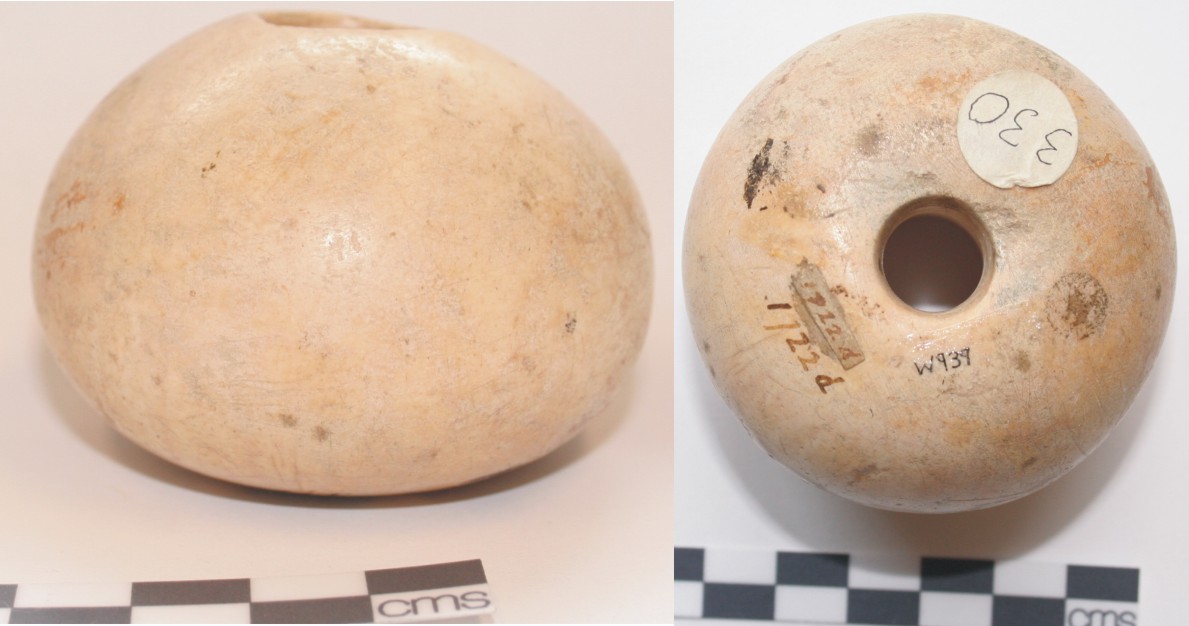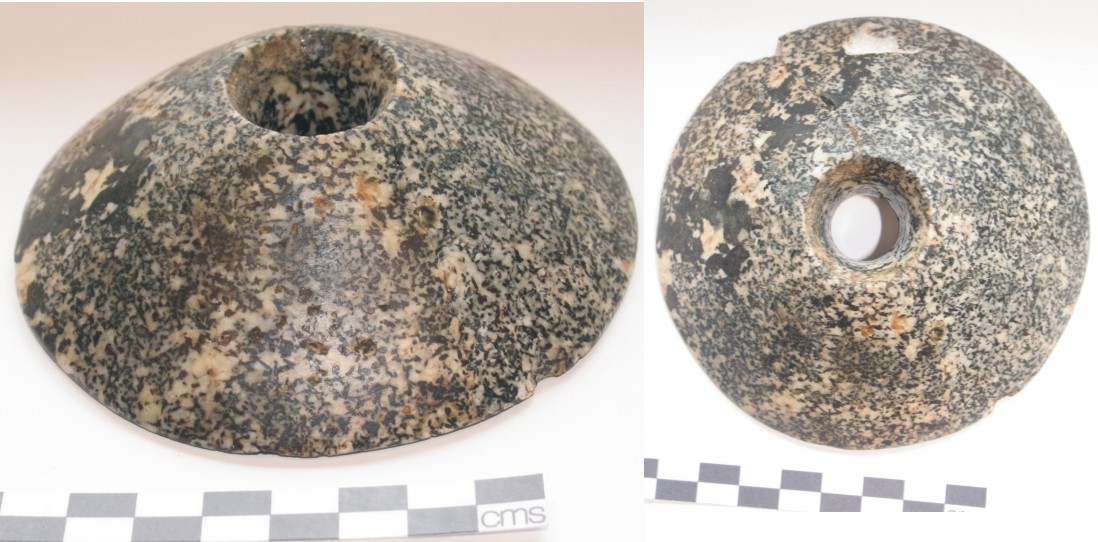Maceheads
{loadposition share}
Maceheads

The object on the left is W152, a diorite macehead excavated from Mostagedda in 1929. For the excavation report see Brunton, (1937, 72). This item is from grave 1854 which describes a grave with broken flint knife and a mace head lying in pieces in front of the head and arms. A pounder was found in the same grave. This probably dates to Naqada I. The object on the right is W939 is made from yellow limestone and comes from Gebelein.
Maceheads were used as weapons and in ceremonies. There are a number of pictures showing kings killing their enemies with such objects. However, the small size of maceheads such as these here suggests that they may have been more for show than use. Maceheads may either have been attached to a leather thong, or put on a wooden shaft.
The disk shaped macehead (an example is shown here on the left) seems to have been generally earlier than the pear-shaped macehead (an example shown on the right). Both date to the Predynastic to early Dynastic times (4000-3000BC) and are found in graves. Often they seem to have been deliberately broken before being put in graves.
One study (Podzorski 1993) has suggested that in graves men tend to be associated with maces (though since only two maceheads were found in this study the correlation may be insignificant) and Hassan and Smith’s (2002, 52) study of 426 graves from 5 cemeteries suggested that maces were as likely to be associated with women’s as with men’s graves.
Other weapons in the Egypt Centre
Other Predynastic items in the Egypt Centre
Further Reading
Needler, W. 1985. Predynastic and Archaic Egypt In The Brooklyn Museum Brooklyn. (see page 258 for information on similar items).
Brunton, G. 1937. Mostagedda and the Tasian Culture. London.
Cialowicz, K. M. 1989. Predynastic mace-heads in the Nile Valley. In Krzyżaniak, L. and Kobusiewicz, M. eds. Late Prehistory in the Nile Basin and the Sahara, Poznań, 261-266.
Hassan, F. A. and S. J. Smith (2002). Soul birds and heavenly cows: Transforming gender in Predynastic Egypt. In Nelson, S.N. and Rosen-Ayalon, M. eds. In Pursuit of Gender. Worldwide Archaeological Approaches. Walnut Creek, 43-65.
Podzorski, P. V. (1993). The correlation of skeletal remains and burial goods: an example from Naga-ed-dêr N7000. In Davies, W.V. and Walker, R. Biological Anthropology and the Study of Ancient Egypt. London, 119-129.